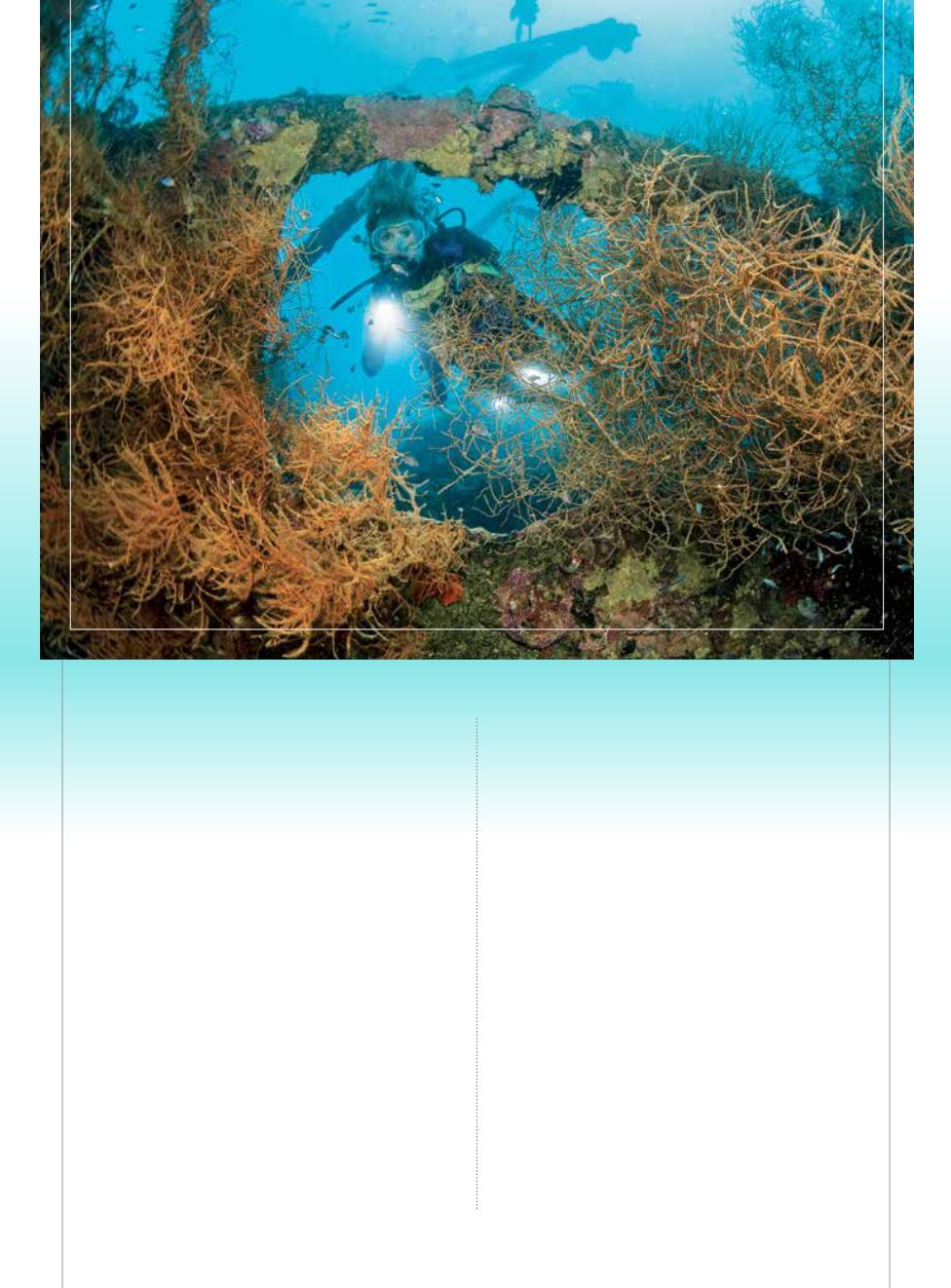
74
|
WINTER 2014
76
|
SPRING 2014
D
ecompression illness is a fascinating
condition that lurks in the shadows of
divers’ minds, reminding us that we are
vulnerable and that our push to explore
is tempered by potential consequences.
Whether ascending from depth or
traveling to high altitudes, as we move
outward and upward from Earth’s center,
the ambient pressure decreases. Under
the right circumstances this can initiate a
complex interplay between physics and physiology that
leads to injury.
Divers face two types of decompression-related
injury: decompression sickness (DCS) and arterial
gas embolism (AGE). Collectively, these conditions
are often lumped together and referred to as
decompression illness (DCI). Their common origin
is the process of decompression, but their underlying
causes differ significantly.
AGE
AGE is the disabling injury in 29 percent of dive
fatalities and is likely associated with insufficient gas
supply, which is the trigger in about 41 percent of dive
accidents.
1
Emboli are actual or potential blockages
of blood vessels by foreign material. They can be
composed of gas, blood clots, fat, tumors, amniotic
fluid or bacterial vegetations. In the case of AGE in
divers, the emboli are made up of gas in the arterial
bloodstream resulting from lung overexpansion or
pulmonary barotrauma (a physical injury to lung
tissue resulting from pressure change). These injuries
allow gas to escape from the small air sacs of the lungs
(alveoli) and enter the arterial bloodstream.
Boyle’s law — which states the volume of a quantity
of gas will increase as ambient pressure decreases —
explains lung overexpansion on ascent. The reverse
of this law is also true: The volume of a quantity of
gas will decrease as ambient pressure increases with
descent. Divers face the highest risk of pulmonary
barotrauma in shallow water. The greatest pressure
differential experienced by divers in the water column
(relative to the ambient pressure at the surface) occurs
within the first 10 to 15 feet.
Expansion of gas beyond the point that the alveoli
can accommodate it results in lung tissue damage
By Nicholas Bird, M.D., MMM
Back to Basics:
Understanding
Decompression Illness
88
spring
STEPHEN FRINK


